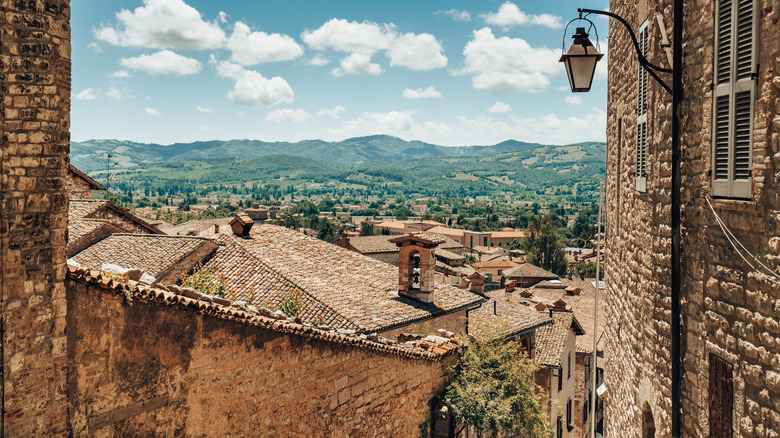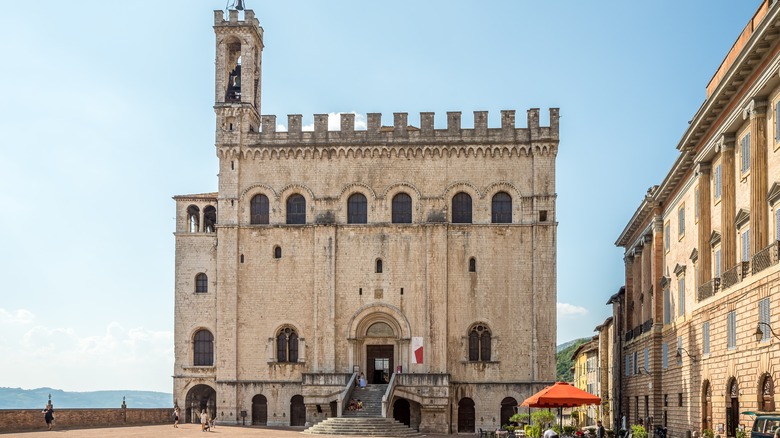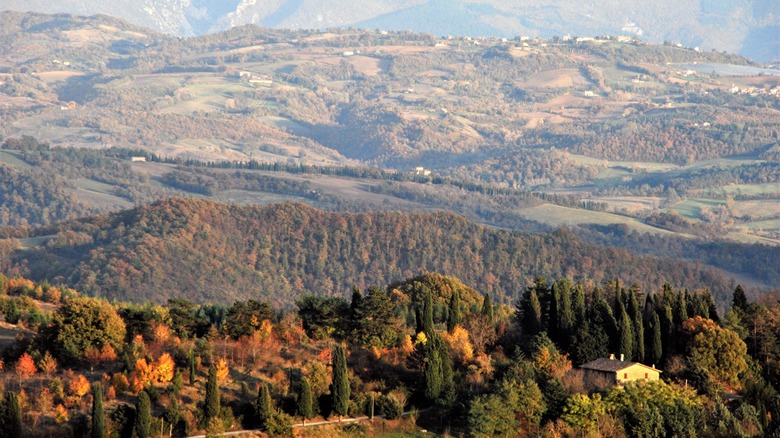A Medieval Town In The Heart Of Italy Is Full Of Charming Streets And Unique Experiences
In the shadow of the Apennine Mountains lies the quaint Umbrian town of Gubbio, blessed with striking Gothic architecture and famous for its truffles and maiolica ceramics. On your next Italian sojourn, don't miss a visit to this underrated region that offers Tuscan vibes without the crowds.
The ancient origins of Gubbio are still visible today — the impressive ruins of the town's Roman Theater are found just outside of the center. The town became wealthy and powerful during the Middle Ages, and the Gothic buildings and residences are a testament to that. Crowning the hilltop, the grand 14th-century palace, with its iconic crenellated roof and tower, overlooks the lush countryside that unfurls below.
Gubbio is less than three hours by car from Florence and Rome. Gubbio will delight all travelers, from history buffs to art lovers to foodies. The town offers unique experiences all year round. Fall is truffle season when truffle-hunting abounds in the nearby forest. December brings stunning Christmas decorations, including the world's largest Christmas tree. Then, starting in May and lasting through the summer, the town becomes busy with religious and music festivals, such as Gubbio's famed Festa dei Ceri (Festival of the Candles), which honors Saint Ubaldo every year. Regardless of when, Gubbio is sure to enchant all travelers with its fascinating past and stunning natural landscape.
What to see and do in Gubbio
Your first stop in Gubbio should be to the Palazzo dei Consoli, the Gothic palace that dominates the town. Inside you'll learn more about Gubbio and its historical significance, as the palace is home to an archaeological museum and an art gallery. For a birds-eye view of the region, embark on a ride on the Colle Eletto cable car to the top of Mount Ingino. From there, you will see the vast Umbrian countryside and get a peek inside Basilica of Saint Ubaldo, a 16th-century church that honors the town's patron saint.
Back in town, take time to meander the cobblestone streets flanked with Gothic architectural marvels. The passageways are lined with shops selling beautiful maiolica pottery, as the craft was a major industry in Gubbio during the Renaissance. There are also many trattorias and cafés serving delicious Italian specialities.
Where to stay in Gubbio
The picturesque Umbrian countryside surrounding Gubbio is dotted with beautiful villas and historic hotels. One example is Castello di Petroia, a 12th-century medieval fortress-turned-boutique-relais perched on a hilltop. The 16 rooms are elegantly decorated, boasting original wooden beams, fine paintings, and period furniture. The hotel's Restaurant Accomanducci is housed in a romantic, candlelit dining room where traditional Umbrian cuisine is served. And if you visit in the summer or fall, you can embark on the uniquely Umbrian experience of truffle hunting on the estate and enjoy a truffle-inspired dinner afterward.
If you prefer to stay in the heart of Gubbio, the best option is Park Hotel Ai Cappuccini, a 17th-century monastery that has been reimagined with modern comforts. With 92 elegant rooms, a fine dining restaurant, health center, spa, and indoor pool, the hotel is the perfect oasis within easy walking distance to all the charms of Gubbio. Gubbio is an ideal base for exploration of other Umbrian landmarks, such as Perugia, a medieval Italian city known for chocolate and art and Cascata delle Marmore, the world's tallest man-made waterfall.


